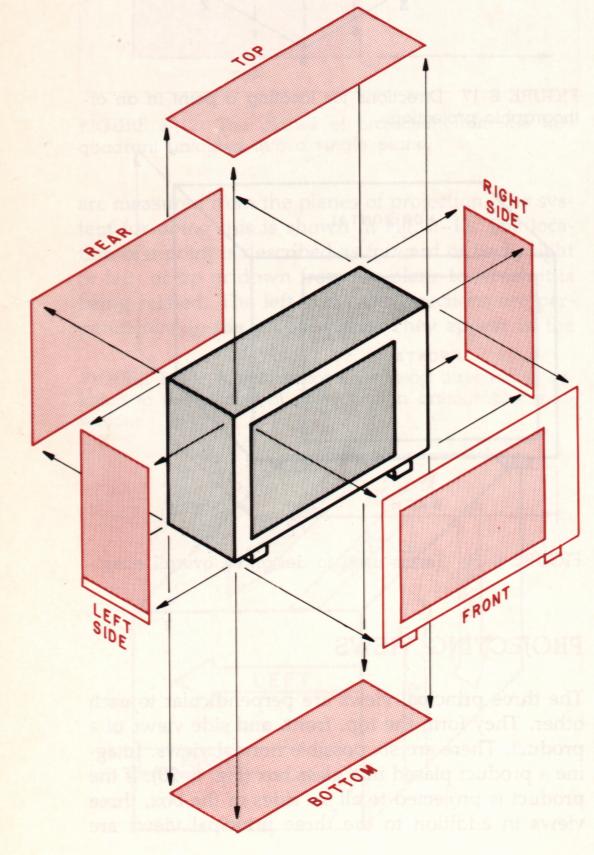
Projecting Views
Orthographic projection is the system of projection used when preparing engineering drawings. It is a standardized method of showing three-dimensional products by drawing views that are projected onto planes of projection.
The six principal planes of projection are: front, top, bottom, left side, right side, and back. Generally not all of these projections are used in drawings. In determining the number of projections to use, the rule of thumb is include only as many views that are needed to represent the object accurately.
An illustration of the planes and projections is indicated in the two figures below.
Planes of View
Orthographic Projections
The first thing to decide before starting to draw is which views are needed and the best way to position the object on the drawing.
The front view is the most important and is selected first. It is the view that shows the most about the product. It is usually the longest view and shows the major shape or profile. It is positioned so that the least number of hidden lines are needed.
The top view folds up and the bottom view folds down from the front view. The right and left sides fold off each edge of the front view. The rear view normally folds off the left side view (see illustration above).
Last Updated Sept.17/99